Marin: Alekhine Defence B04
1.e4
Nf6 2.e5 Nd5 3.d4 d6 4.Nf3 g6 5.Bc4 Nb6 6.Bb3 Bg7 7.Ng5
e6
|
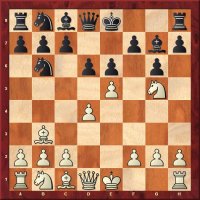 |
|
The fianchetto variation with 7...e6 is named
after Lev Alburt. Mihail Marin has given it a
thorough examination and can't detect any big
problems for Black. |
Postny: Sicilian B90
1.e4 c5 2.Nf3 d6 3.d4 cxd4 4.Nxd4 Nf6 5.Nc3 a6 6.Be3 e5
7.Nb3 Be6 8.Qd2 Nbd7 9.f4
(b5 10.0-0-0)
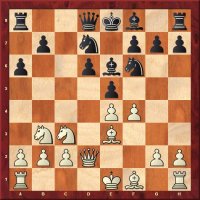 |
|
With 9.f4 (instead of 9.f3) White enters a so
far little played sub-variation which is based
mainly on the fact that 9...exf4 can hardly
equalize. According to Postny, the whole thing
looks quite promising for the first player. |
Kritz:
French C18
1.e4
e6 2.d4 d5 3.Nc3
Bb4
4.e5 c5 5.a3
Ba5!?
6.b4 cxd4 7.Nb5
Bc7
8.f4
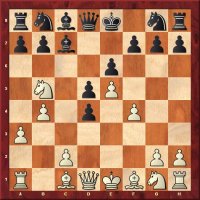 |
|
The quiet variation with 7.Nb5
(the alternative is 6.Qg4 or 7.Qg4) promises
White a safe advantage in most lines. Only after
8... Bd7!
things are less clear. |
Kuzmin: Petroff C43
1.e4
e5 2.Nf3 Nf6 3.d4 Nxe4 4.dxe5 d5 5.Nbd2
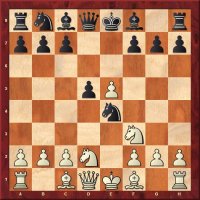 |
|
This is the favourite line of Ian Nepomniachtchi.
Playing 4.dxe5, White avoids the long
theoretical variations and still has propects of
a slight opening advantage - you can't ask for
more against the Petroff. |
Marin: Ruy Lopez C66
1.e4 e5 2.Nf3 Nc6 3.Bb5 d6 4.d4 Bd7 5.0-0 Nf6 6. Nc3 Be7
7.Re1
exd4 8.Nxd4 0-0 9.Bxc6
bxc6
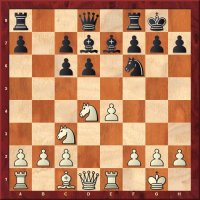 |
|
The diagram position arises almost consequently
after 3...d6, so good knowledge of the
variations and plans are quite relevant for the
first player. For Black, the fine thing about
3...d6 is that early on he is the one to
determine what is played. |
Grivas: Slav Defence D11
1.d4
d5 2.c4 c6 3.Nf3 Nf6 4.Nbd2 Bf5 5.Nh4 Be4
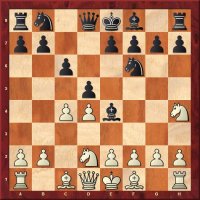 |
|
Following an article of Grivas on 4.Nbd2
in CBM 123, now it turned out that 5...Be4
represents quite a good defence and requires
additional analysis. |
Hazai/Lukacs:
Slav Defence D15
1.d4
d5 2.c4 c6 3.Nf3 Nf6 4.Nc3 a6 5.c5 Bf5 6.Bf4 Nbd7 7.e3
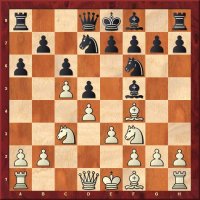 |
|
There hardly is a more straightforward way to
fight the 4...a6-Slav than 5.c5. The article of
our Hungarian authors shows that with the most
frequent move 7...e6 Black is struggling to
achieve equality, a trend can be noticed towards
7...g6. |
Karolyi: Queen's Gambit Accepted D20
1.d4
d5 2.c4 dxc4 3.e4 c5 4.d5 e6 5.Bxc4 Nf6 6.Nc3 exd5
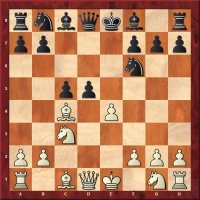 |
|
The discussed line with 3...c5 4.d5 e6 is at any
rate straighter and simpler to play than than
the main variations 3...e5 or 3...Nf6.
In his article, Tibor Karoly tries to prove that
it also qualifies to grant Black a satisfactory
game. |
Langrock: Queen's Indian Defence E12
1.d4
Nf6 2.c4 e6 3.Nf3 b6 4.a3 Bb7 5.Nc3 g6
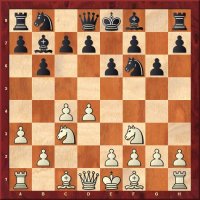 |
|
In the first part of his investigations on the
Romanishin Variation, the author goes to
introduce the sidelines (i.e. not 6.Qc2 or
6.Bg5). Some of them do present a challenge, yet
Black should be able to master it. |
Stohl: Nimzo Indian E32
1.d4 Nf6 2.c4 e6 3.Nc3 Bb4 4.Qc2 0-0 5.e4 d5 6.e5 Ne4
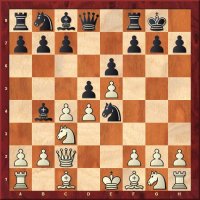 |
|
The variation with 5.e4 has been frequently
played of late, seeing a development: first 7.a3
was tried, now 7.Bd3 is played right away. After
7...c5 the move 8.Ne2
was customary, now the latest trend is 8.Nf3. |
Krasenkow: King's Indian Defence E90
1.d4
Nf6 2.c4 g6 3.Nc3 Bg7 4.e4 d6 5.Nf3 0-0 6.h3
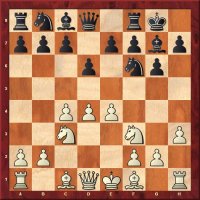 |
|
The author is one of the greatest specialists of
the King's Indian with 6.h3. Part 1 of the
survey deals with variations without 6...e5,
focusing in particular on 6...c5 7.d5 e6. |
|
Grivas: King's Indian Defence E92
1.d4 Nf6 2.c4 g6 3.Nc3 Bg7 4.e4 d6 5.Be2 0-0
6.Nf3 e5 7.Be3 exd4 8.Nxd4 Re8 9.f3 c6 10.Bf2 a6
11.0-0 b5
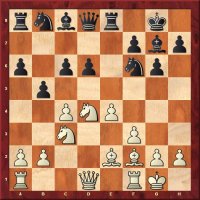 |
|
The diagram position, which can be
easily reached after 7.Be3, has appeared
suprisingly seldom in practice so far,
yet these games looked quite good for
the second player. |
|